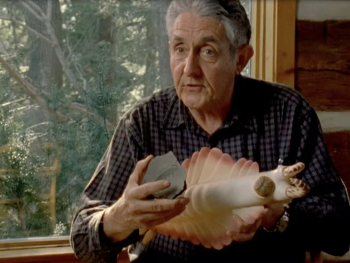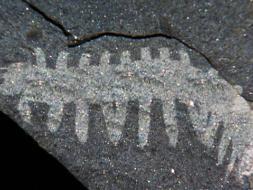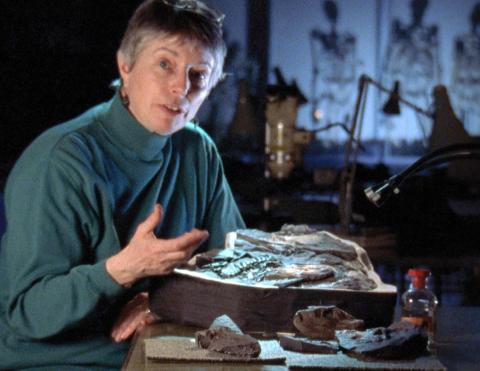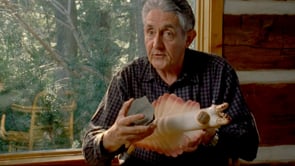
You just never know what you’re going to find. The excitement is finding something completely different. And even more exciting, at least to me, is finding something you’re looking for.“--Des Collins
Paleontologist Des Collins wants to look back into deep time to study the Cambrian Explosion, a defining moment in the evolution of animal life that began about 520 million years ago lasting 10-20 million years. Evidence of this explosion of new life forms is in the Burgess Shale, a series of fossil beds in the Canadian Rockies of British Columbia. Collins has dedicated his career to studying these ancient organisms.
Few of the Burgess Shale fossils reveal an entire animal. So Collins had to put pieces together to see an entire animal, a process that is both difficult and exciting. The fossil Anomalacaris was unlike any living animal and was misidentified over a period of 100 years revealing the false starts that can happen in scientific research. Collins set out to piece together the entire animal by looking at the vast trove of Burgess Shale fossils at the Royal Museum of Ontario where he worked. He discovered more pieces of the puzzle and realized that previous fossils that were described as separate organisms were, in fact, part of the animal Anomalacaris. Once he had assembled the entire animal, he had a model built to show what a fearsome predator it must have been.
About Des Collins career
Des Collins, Ph.D. is the retired (2005) Curator of Invertebrate Paleontology at the Royal Museum of Ontario. He is one of the world’s experts on the Burgess Shale, leading expeditions there for 18 years. Both his work in the field and in existing collections of fossils has increased our understanding of the Burgess Shale's fauna, structure and diversity, as well as its distribution in space and over time. Today, the Royal Museum holds the largest collection of Burgess Shale fossils in the world (more than 150,000 specimens), containing examples from all major beds and many sites. Collins uncovered new discoveries not only in the field, but also in the existing collection of fossils.
Collins has written extensively about the Burgess Shale fauna and its significance, and about the Cambrian Explosion. He has also published papers on the work he did putting together the fossil Anomalacaris, a good example of how hard it is to classify the Burgess Shale species.



















